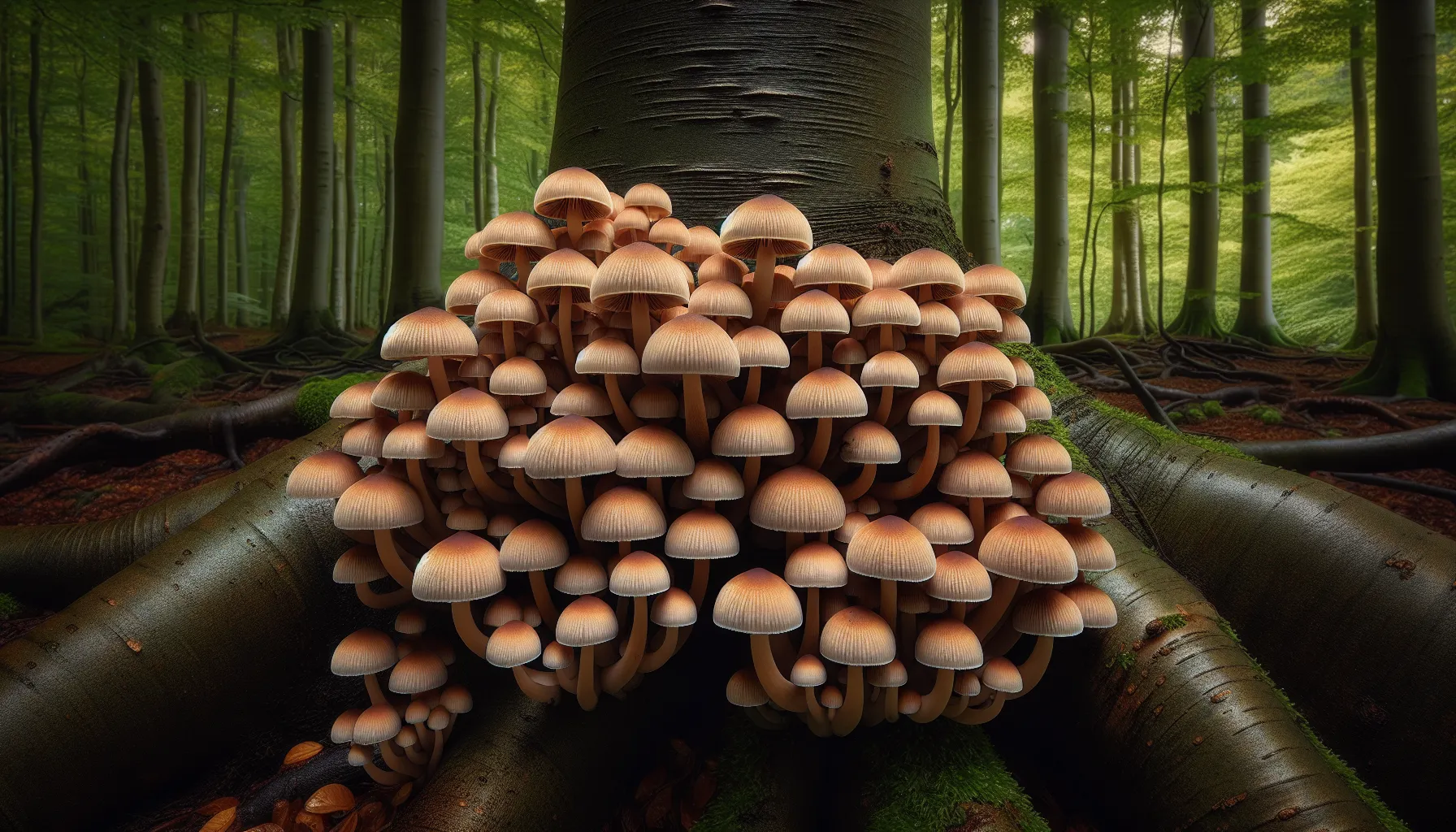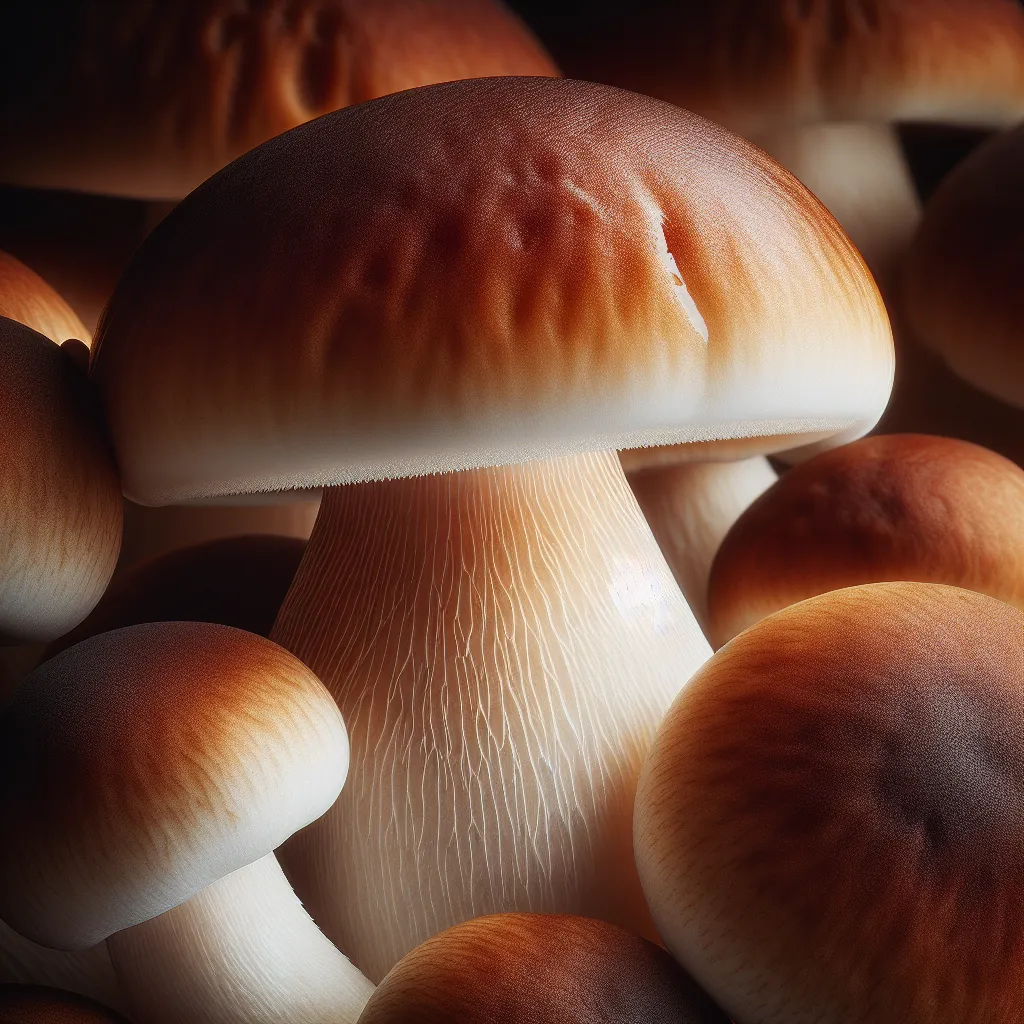Beech mushrooms, (Hypsizygus tessulatus), are a gourmet’s delight and a forager’s treasure. Native to East Asia and flourishing on hardwood trees, these fungi are a versatile ingredient that can elevate a simple dish to an exquisite meal. Highly valued for their nutty flavor and slightly crunchy texture, beech mushrooms are not only a culinary favorite but also a source of numerous health benefits. In this comprehensive guide, we’ll dive into the world of beech mushrooms, exploring where to find them, how to store, clean, cook, and enjoy their numerous health benefits.

Introduction to Beech Mushrooms
Beech mushrooms, which are part of the Basidiomycota division, grow in a distinctive manner, often wide and flat when foraged in the wild. In contrast, cultivated varieties tend to be thinner and longer, featuring little round caps that come in shades of white and brown. Despite their color differences, both varieties share the same savory taste profile.
These mushrooms are a culinary favorite in China and Japan, known there as Shimieji, and have been making their mark in North American specialty food markets. Due to their adaptability in various dishes, from soups to stir-fries, these mushrooms have garnered a reputation for being a change of pace from the commonly used button mushrooms.

Beech Mushrooms — Where to Find Them
Though they are a common sight in the wild across Asia, North America’s climate isn’t as conducive to the natural growth of beech mushrooms. However, they are cultivated in temperate regions across the US, making them accessible to mushroom enthusiasts. When seeking out these mushrooms, specialty grocery stores, Asian food markets, and local farmers’ markets are the best places to start.
For high-quality beech mushrooms, look for specimens that are dry to the touch and firm. Avoid any that appear slimy or soggy. If you’re interested in the intricacies of mushroom foraging and identification, Mushroom Appreciation offers a wealth of information, including how to identify edible mushrooms and distinguish them from their inedible or toxic counterparts.
How to Store, Clean, and Cook Beech Mushrooms
Beech mushrooms have a hardy nature, which allows them to be stored for up to a week when wrapped in a paper towel and placed in a paper bag in the refrigerator. As water can compromise their texture, it’s advisable to clean them with a damp paper towel rather than washing them. Before cooking, separate the stalks from the interconnected base to promote even cooking.
Their culinary versatility is showcased through various cooking methods, with stir-frying being the most popular. It’s important to note that beech mushrooms should be cooked as they can be bitter when raw, and cooking them enhances their flavor and texture.
For those looking to expand their cooking repertoire with mushrooms, The Mushroom Council provides recipes and cooking tips specifically for mushrooms, offering innovative ways to include them in your diet.
Health Benefits of Beech Mushrooms
Beech mushrooms are not only delicious but also packed with health-promoting properties:
- Antioxidant Properties: High in Selenium, beech mushrooms help combat free radicals and may reduce the risk of chronic diseases.
- Rich in B Vitamins: The presence of Pantothenic Acid, Riboflavin, and Niacin supports red blood cell formation, hormone production, and the functioning of the nervous and digestive systems.
- Has Beta-Glucan: Known for its role in regulating blood sugar and improving cholesterol profiles, β-glucan is a valuable dietary fiber found in these mushrooms.
- Contains Copper: This mineral is vital for maintaining healthy bones, nerves, and the production of red blood cells.
- High in Potassium: Surpassing bananas, beech mushrooms are an excellent source of potassium, which is essential for reducing blood pressure and preventing various health issues.
- Vitamin D: Exposing beech mushrooms to sunlight before consumption can boost their Vitamin D content, aiding in bone health.
For a closer look at the nutritional benefits of mushrooms, visit NutritionValue.org, which provides detailed nutritional information on a wide array of food items, including beech mushrooms.
Gourmet Cooking in Your Home Kitchen
Incorporating beech mushrooms into your meals can bring a touch of gourmet flair to your home cooking. With their health benefits and rich flavor profile, they are an excellent addition to any kitchen. Whether you’re a seasoned chef or a cooking enthusiast, beech mushrooms can enhance your culinary creations, providing a sumptuous dining experience.
If you’re keen on exploring other mushroom varieties and their uses in cooking, Serious Eats offers a treasure trove of recipes and cooking techniques that can help you widen your culinary horizons with mushrooms.
In conclusion, beech mushrooms are a delightful and nutritious addition to any diet. By understanding how to select, store, and prepare them, as well as appreciating their health benefits, you can enjoy these mushrooms to their fullest potential. Whether you are a forager or a home cook, beech mushrooms promise a gastronomic adventure worth exploring.
